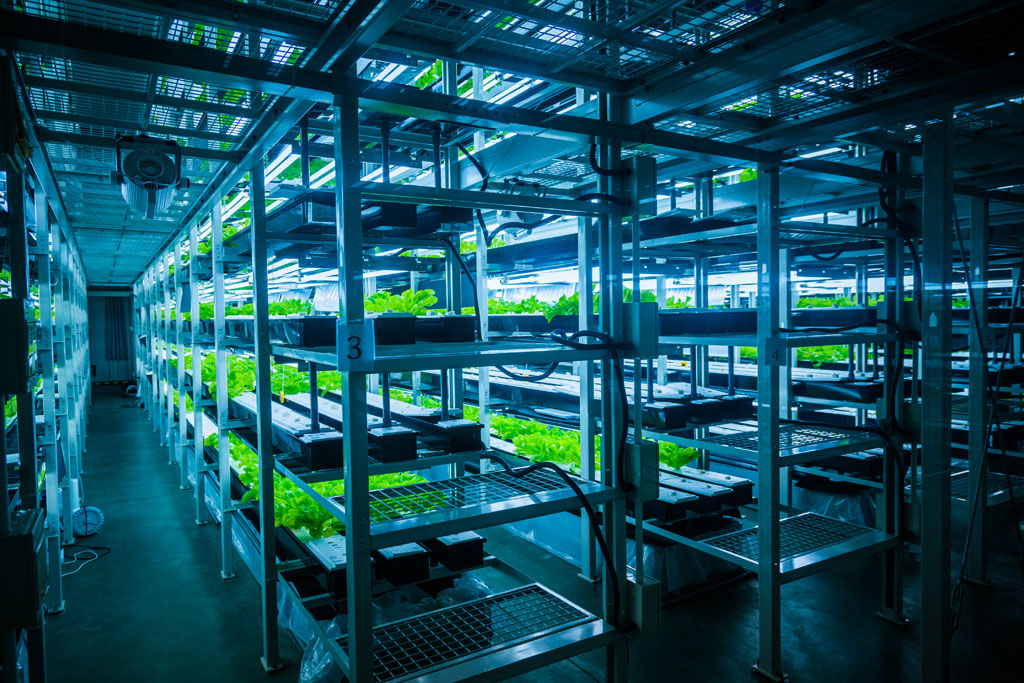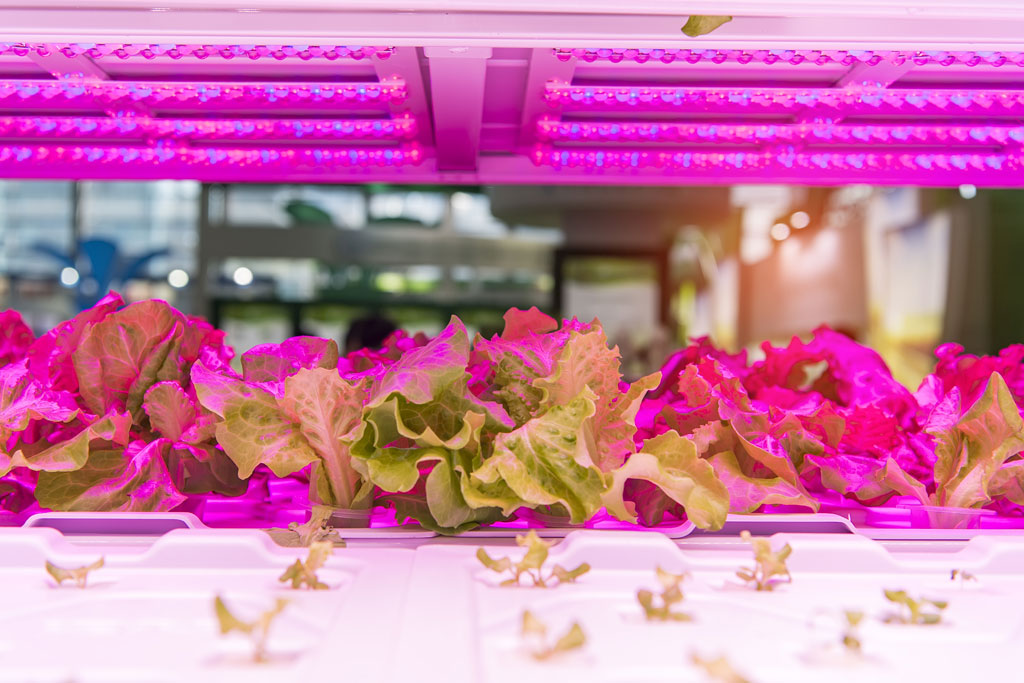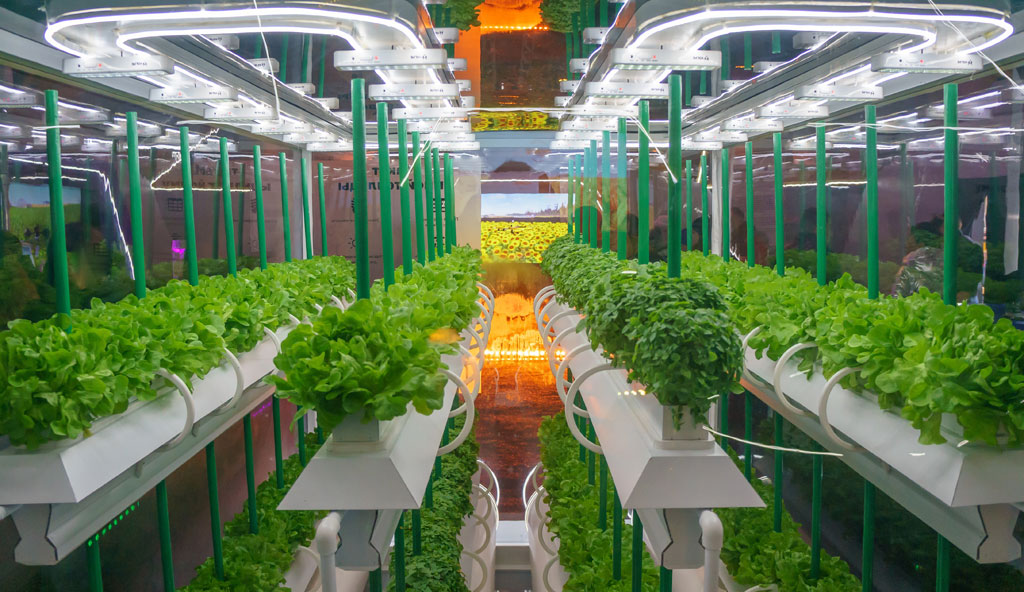One of the most exciting developments in the world of agriculture and plants is the growing popularity of hydroponics. Hydroponics is the method of raising crops without soil. This process is commonly used for indoor planting, which reduces the evaporation rate and therefore the overall water demand.
When hydroponic equipment is installed properly, it offers the following advantages over conventional farming:
- Up to 90% more water-efficient than soil-grown planting.
- Year-round growing in a controlled, indoor environment.
- Vertical growing columns that can increase crop yield by two to three times for the same amount of space.
- Reduced risk to soilborne illnesses and pests—which, in turn, renders pesticides and other chemicals unnecessary.
- Faster growing periods, thereby shortening how much time is needed before plants can go to market.
Though hydroponic growing offers many benefits, there are a few factors that must be considered carefully—including, for example, the lighting. An outdoor vegetable garden needs about five hours of direct sunlight, and about 10 hours of indirect sunlight. Outside these hours, shade is also important for plants because it gives them the opportunity to rest.
In an indoor hydroponic garden, plants need the same amount of light as they would outside, but they typically only receive UV exposure through artificial light fixtures. Agricultural lighting must be carefully calibrated to ensure the plants will thrive in their environment, and optimizing your lighting system could increase the overall crop yield and accelerate production.
Types of Hydroponic Lighting
There are several types of hydroponic lighting and bulbs, each of which is designed to replicate sunlight at a specific wavelength. The wavelength color corresponds to a time in the sun’s cycle, and gardeners choose the lighting type and strength based off the plant’s individual needs.
The most common types of hydroponic lights and holders include:
Metal Halide Lamp Holders
This bulb type can replicate the hot summer sun by emitting wavelengths that are on the blue/white end of the light spectrum. The correct time to use a halide bulb is during the plant’s early growth stage, as most plants need intense heat after the germination process. Some leafy plants like herbs and other vegetables can grow to full maturity with metal halide bulbs.
High-Pressure Sodium Lamp Holders
The reddish-orange hue of the high-pressure sodium bulb mirrors the sunlight during the fall months. This is commonly the flowering stage of a plant’s life and should be used during the same period for a hydroponically grown plant.
Fluorescent Lamp Holders
A fluorescent light gives off a muted blue light, which is the ideal setting for young seedlings and cut plants. This is because fluorescent lighting gives off minimal heat, which is needed in the early stages of a plant’s life.
LED Lamp Holders
The LED light is the most common hydroponic light, as the wavelength can support a plant during every stage of its life. LED lights are also popular because they are inexpensive and last a long time.
How Hydroponic Lighting Is Measured
Plants also need to receive different types and strengths of light during various stages in their life. To ensure your garden receives the correct type and amount of light, use the following criteria to estimate the best growing conditions:
- Temperature: The temperature of a hydroponic light does not refer to the heat the light produces but rather the wavelength. As noted above, different colored wavelengths are important to use during specific times in a plant’s life.
- Lumen: A lumen is the measurement of how bright a light is, but this does not measure the light that is invisible to the human eye.
- Watt Power: This measurement is found by determining the amount of energy units needed to power the lamp. Agricultural lights are commonly rated by this well-known measurement.
- Nanometers: Visible light is measured between a range of 400 to 700 nanometers; most horticultural lights work inside this range.
Agricultural Hydroponic Lamp Holders from Mitronix, Inc.
At Mitronix, Inc., we specialize in producing lamp holders for hydroponic lighting fixtures. Our dedicated and knowledgeable staff has the expertise to offer designers and manufacturers the high-quality lighting solutions they need. Request a quote to receive a free consultation about hydroponic lighting solutions, or contact us today if you have any questions.






